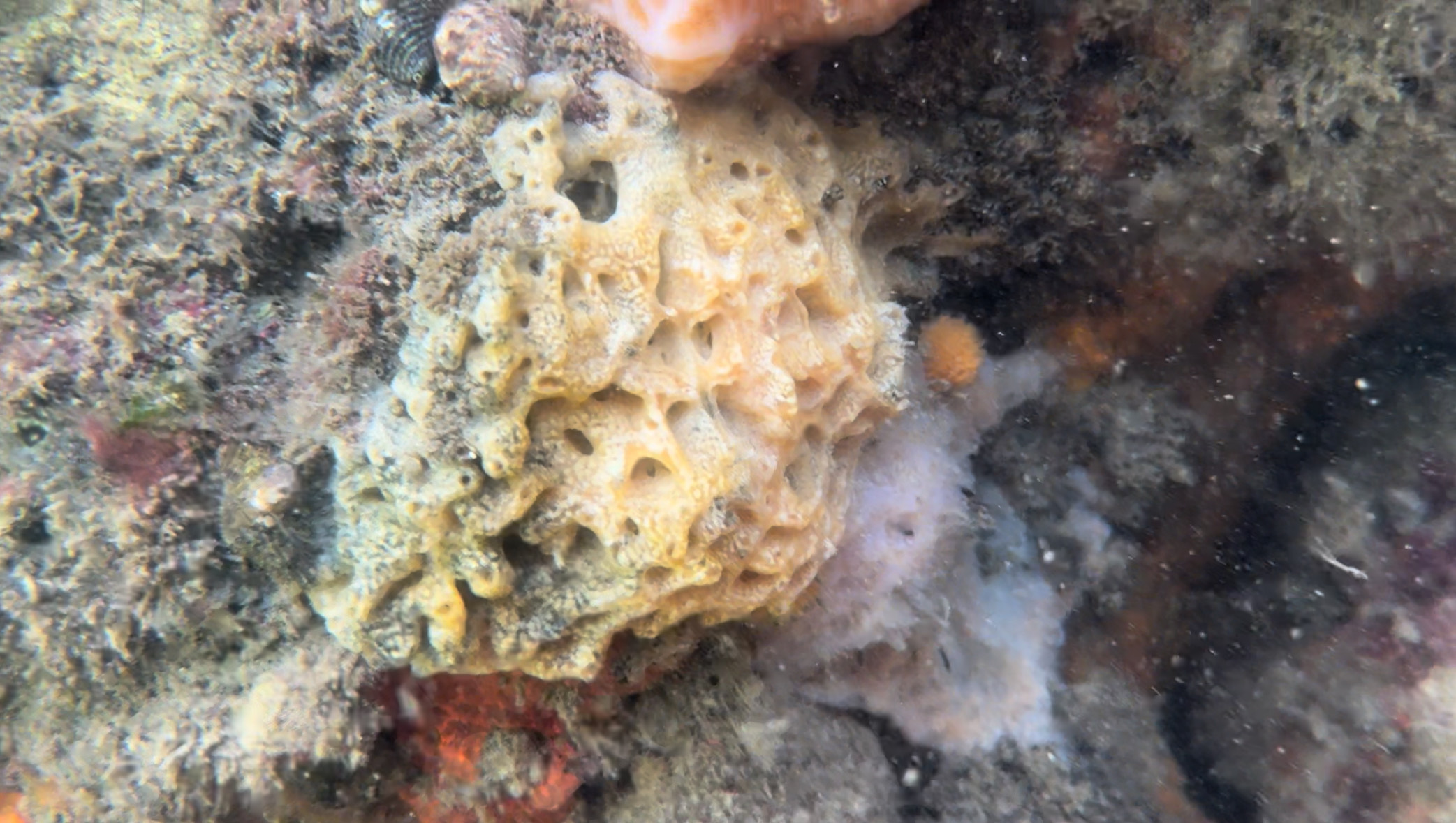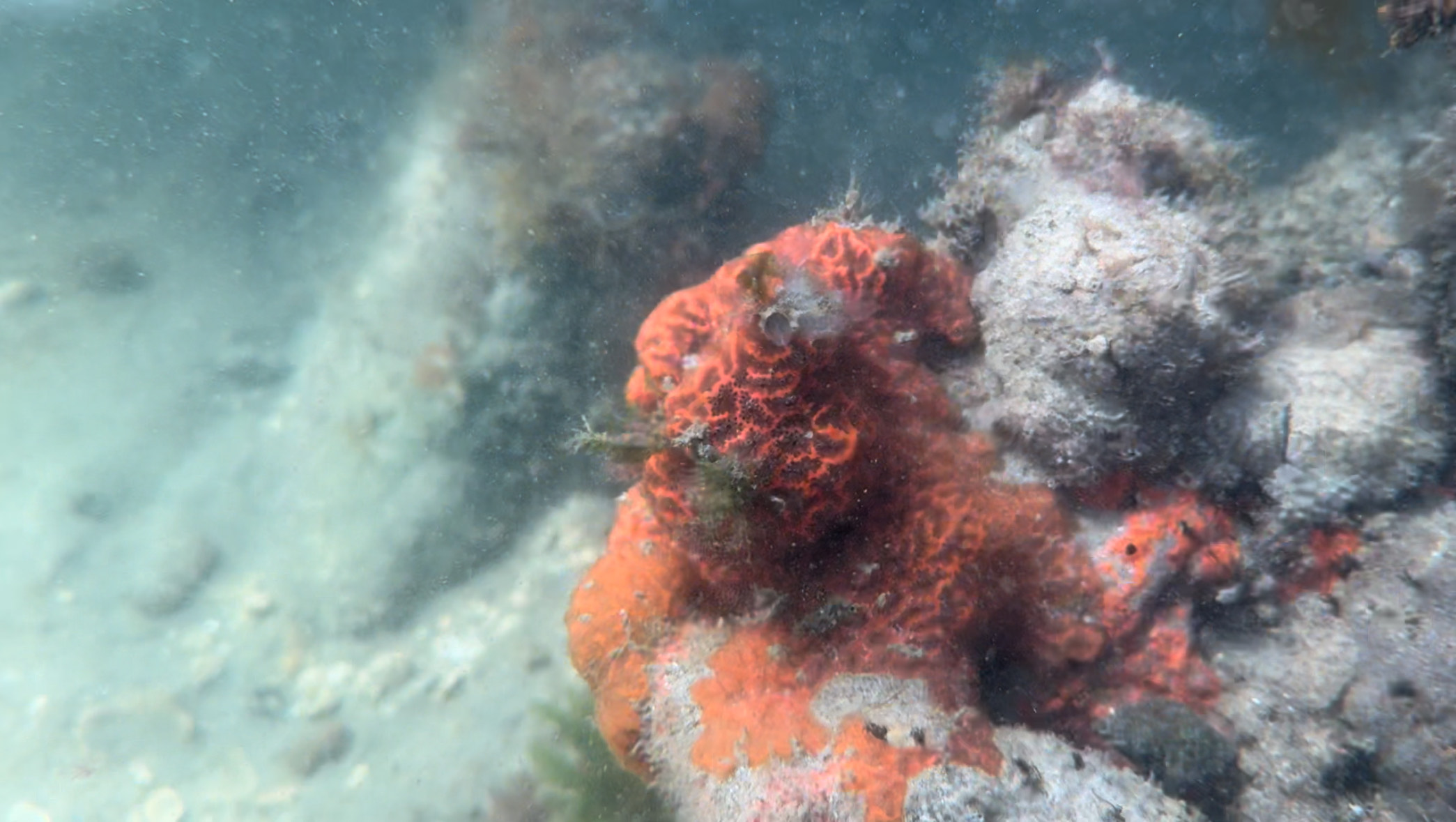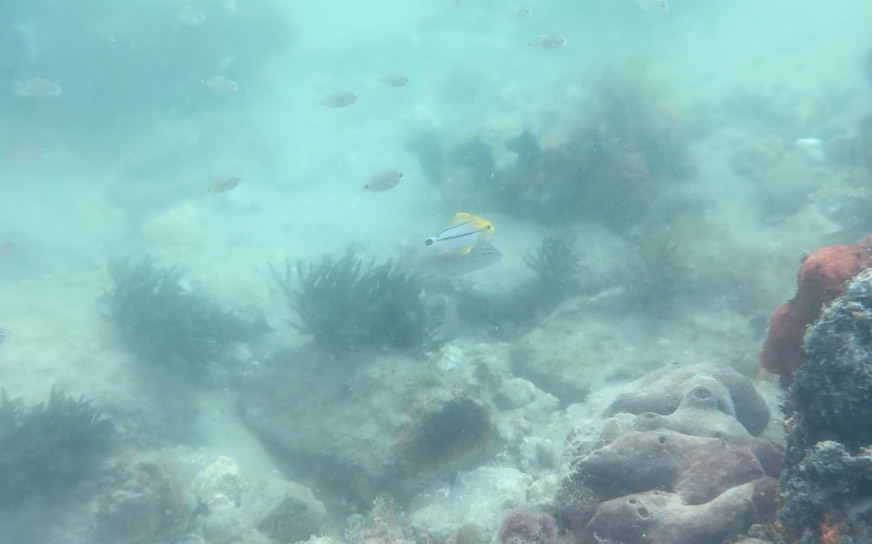Many people vacation around or near Tampa Bay in the beautiful sunny state of Florida. Sadly most of those people have little to no idea of the diversity of organisms that lie below the surface of the Bay. I have been fascinated with the waters in and around Tampa Bay for most of my life. At just over a year old, my family and I began visiting the Tampa Bay area and continued to visit on spring break from Michigan to later fulfill my lifelong dream of moving down to Florida, and this area always continues to amaze me. I have personally been exploring a few areas for a couple of years now, and the diversity of the fish, corals, and sponges is astonishing. In this article, we will be taking a look into some unique organisms that call Tampa Bay home.
One of the most common organisms I see is a gorgonian in the genus Leptogorgia and specifically the beautiful non-photosynthetic Leptogorgia virgulata (main image). This species can come in many different shapes and colors and is also one of the most colorful gorgonians found in this area. Usually, I have only ever seen species of the genus Leptogorgia, but I have occasionally found a few photosynthetic species that call this area home. These include Pterogorgia guadalupensis, also known as the common flat blade gorgonian, and you can also find Muricea elongata, or the Spiny Gorgonian. These gorgonians can be found in quite shallow water as I see them anywhere from three to twenty-five feet in and near the Bay.

Certain areas can also be full of many different species of sponges, especially areas of high flow and current. Bridges, piers, and rock piles tend to always hold an abundance of sponges in the Tampa Bay area. My favorite spot to find these fascinating and often colorful sponges is certain bridges that constantly have the tides rushing in and out. The almost constant flow makes these areas the perfect spots for sponges and many other filter-feeding organisms. Furthermore, when you find sponges, you are almost guaranteed to find a wide variety of colonial tunicates. Colonial tunicates can be found in some of the most vibrant of colors. Many stick out, including this neon orange tunicate that I quite literally saw from many feet away. If the water conditions are favorable for sponges, the conditions are also favorable for tunicates. If you find an area with a significant amount of flow, you are almost guaranteed to find a species or two of colonial tunicates.

Tampa Bay is also home to many other cool invertebrates that you may not expect to find, including feather dusters, sea cucumbers, sea squirts, and even a few species of anemones. Many of these specific species can be found in the hobby from time to time. Some of the examples of species one might find in the hobby include Black Sea Squirts Phallusia nigra and common feather dusters Sabellastarte spp. Occasionally I come across brittle stars, serpent stars, and even a few common sea cucumbers, Holothuria floridana.

When it comes to fish, you may be quite surprised. Although it’s not all that common, I see many species of tropicals in the Bay, especially in the summer months. These include Blue Angelfish Holacanthus bermudensis, Gray Angelfish, Pomacanthus arcuatus, Porkfish, Anisotremus virginicus, Sergeant Major Damsels, Abudefduf saxatilis, Tiger Gobies Tigrigobius macrodon, and much, much more. Tropicals can be found around structures including rock piles and bridges. Although the fish diversity isn’t as good as it would be on an offshore wreck, it’s still pretty cool to see some tropicals trickle into Tampa Bay, and worth your time to put on some snorkel gear and take a look.

Surprisingly, Tampa Bay is home to many different species of both hard corals and octocorals, including those listed above. On a swim around Tampa Bay, you may even come across what I call the “Snowflake” coral which is also known as the White Telesto Coral or Carijoa riisei. This is a beautiful white polyped coral which actually happens to be invasive in most of Florida’s waters. You may also come across a couple of species of cup coral, including orange sun coral Tubastrea faulkneri and Hidden Cup Coral Phyllangia americana. These species are both a beautiful sight to behold while diving. However, keep in mind that spotting hidden cup coral can be tricky as they like to grow underneath small ledges, rocks, and bridges. With their translucent polyps, they are definitely something you may not notice unless you are observing things quite closely. Another cool sight is a species of star coral known as Blushing Star Coral Stephanocoenia intersepta.

We have taken the time to explore Tampa Bay’s hidden gems through text, but next time you visit the Tampa Bay area, be sure to take some time to explore and even snorkel the local waters to see what you might be surprised to find! I never expected Tampa Bay to have such diversity in aquatic life, but if you have the chance, I highly recommend you checking it out! You certainly won’t be disappointed!



